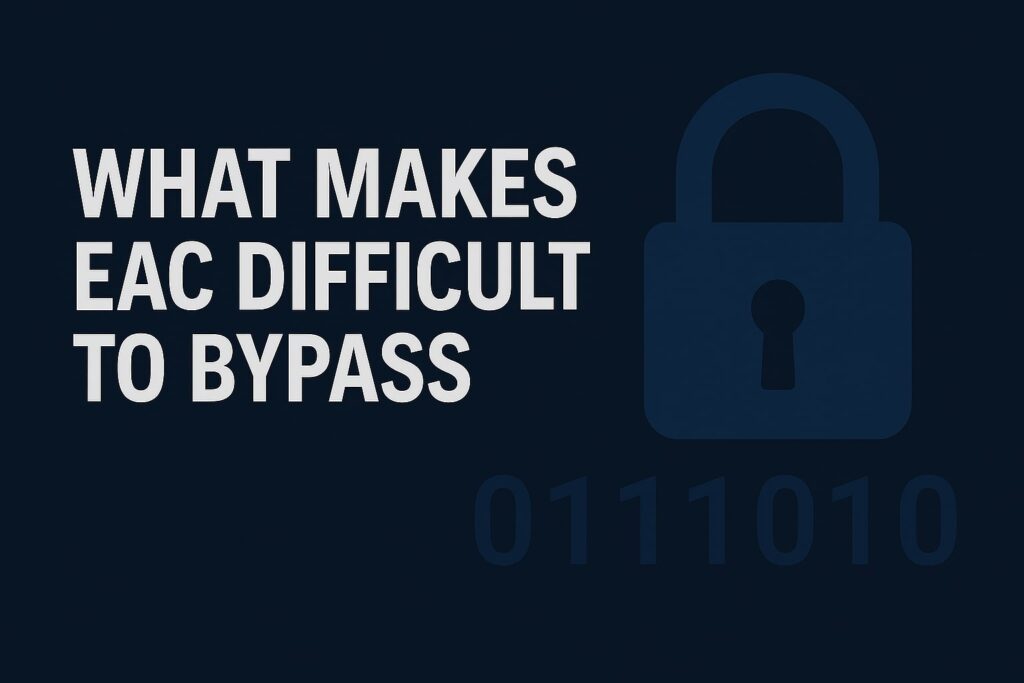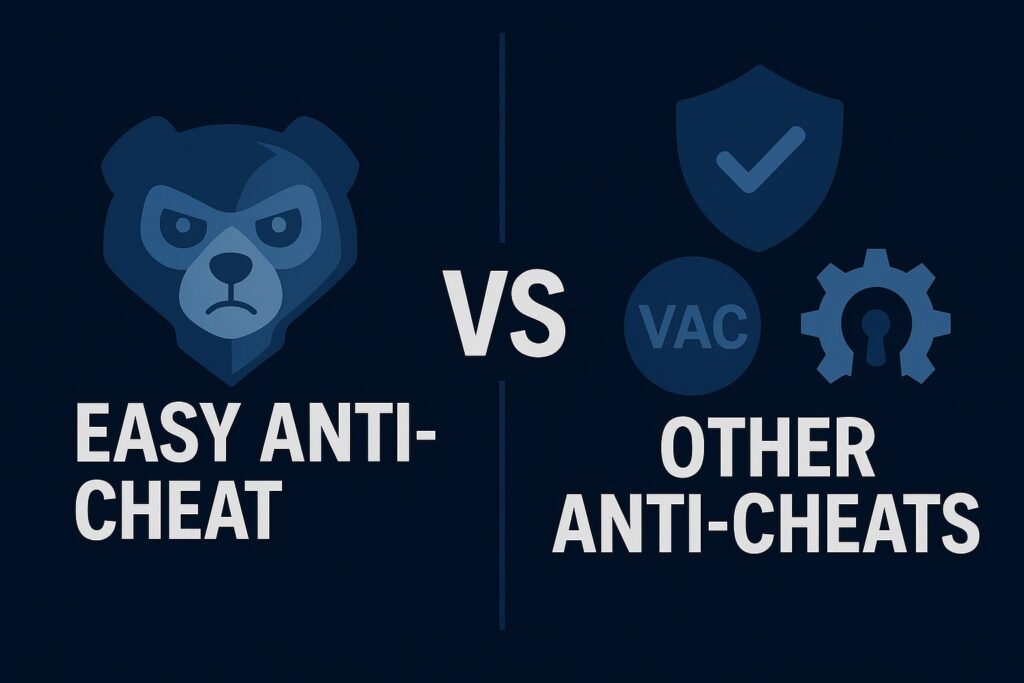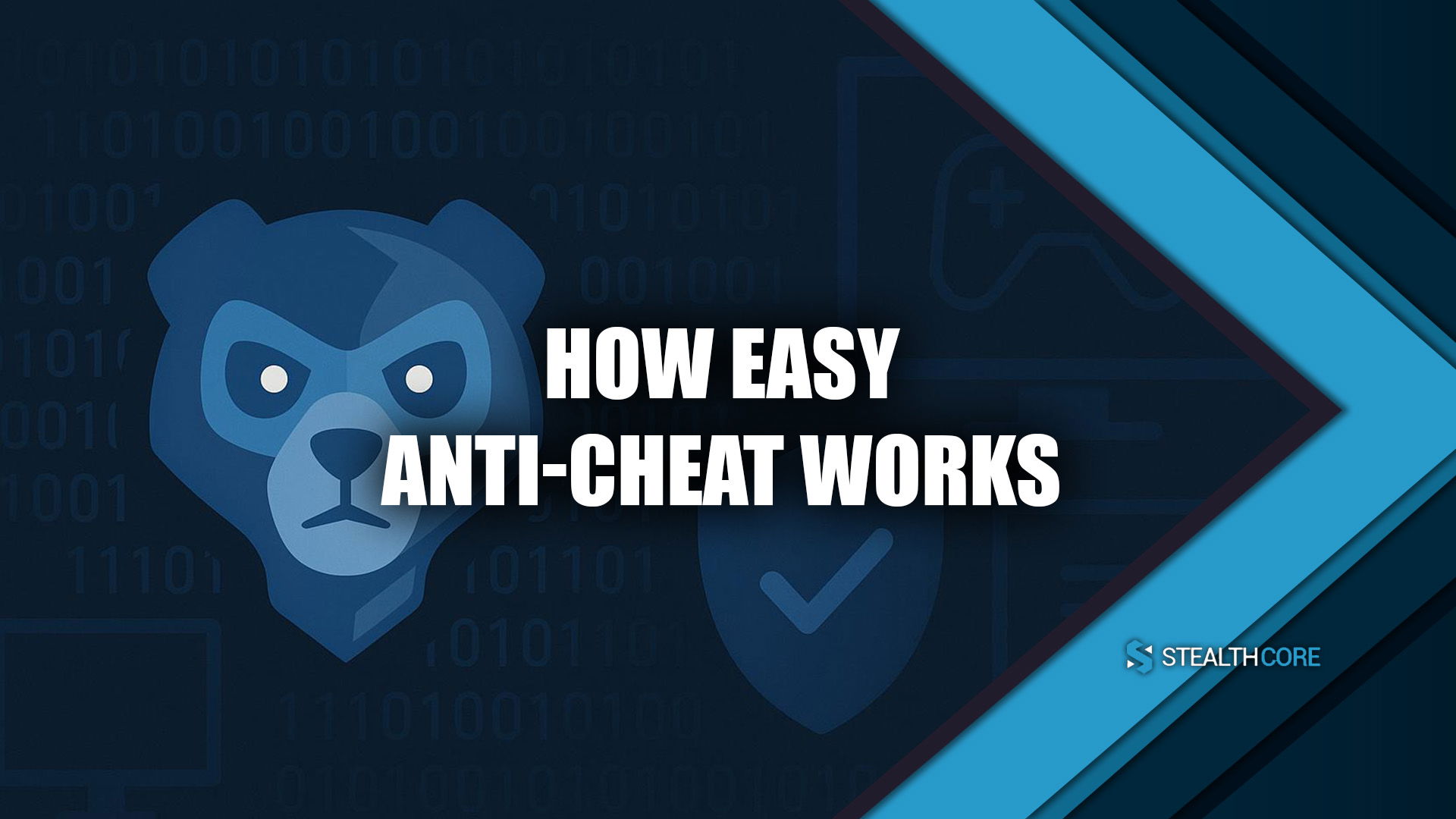Cheating can really mess with the fun of online gaming, so it’s super important to keep things fair. A lot of popular multiplayer games use systems like Easy Anti-Cheat to help with this. EAC runs in the background, keeping an eye out for any shady behavior or hacks.
Through this article, we’ll break down how easy anti-cheat works and the strategies it uses to spot cheaters. We’ll also cover how bans happen and why it’s good to know how it all operates, especially if you’ve seen those bold claims about undetected cheats floating around.

What is Easy Anti-Cheat?
Easy Anti-Cheat is made by Epic Games in 2018. EAC keeps multiplayer games free from cheaters and hackers.
The aim is to keep gaming fair by always checking for shady behavior, unauthorized software, and any tricks that could give players an unfair edge.
Some of the games protected by EAC include:
- Rust
- Apex Legends
- Fortnite
- The Finals
- Dead by Daylight
How Easy Anti-Cheat Works
How easy anti-cheat works is more involved than basic file scanning or banning known cheats. It employs a hybrid detection system that covers multiple attack surfaces:
- Signature Scanning
EAC cross-references known cheat signatures such as injected DLLs or modified game files against its internal database. - Behavioral Heuristics
It analyzes in-game behavior for patterns that aren’t humanly possible, like perfect aim tracking or abnormal reaction times. - Real-Time Monitoring
Unlike some anti-cheats that perform checks at game launch, EAC constantly monitors memory, background processes, and input patterns. - Kernel-Mode Driver
EAC uses a kernel-level component to observe low-level interactions that typical software can’t detect. This enables it to catch:- Unauthorized drivers
- Hidden injections
- File tampering at the system level
- Manipulation of system calls
Ban Enforcement
EAC doesn’t just detect cheats, it decides how and when to take action, and it’s not always immediate.
- Immediate Bans
These are issued when a cheat is undeniably detected. This usually applies to public or outdated tools. - Delayed Bans
In more strategic cases, EAC delays bans deliberately. This throws off developers trying to reverse-engineer the anti-cheat’s methods. You might cheat for days without a ban, only to be flagged retroactively once EAC finishes its analysis. - Hardware ID (HWID) Bans
For repeat offenders or major violations, EAC may lock out the entire system using hardware bans.

What Makes EAC Difficult to Bypass
EAC’s strength lies in its adaptability and the way it combines traditional and modern detection techniques. Here’s why it’s not an easy anti-cheat to bypass:
- Behavioral Analysis:
Even if your tool isn’t detected via signature, EAC can flag behavior that falls outside normal parameters. - Real-Time Monitoring:
Because it’s always watching, there’s no guaranteed “safe” window to inject or run a cheat. - Frequent Updates:
EAC’s detection rules are constantly evolving, based on telemetry and reports from millions of players. - Obfuscation and Anti-Reversing:
Delayed bans, encrypted components, and code obfuscation make it harder for cheat devs to figure out what went wrong.

Easy Anti-Cheat vs Other Anti-Cheats
To understand how EAC compares, let’s look at a few other popular anti-cheat systems:
- BattlEye:
Offers similar kernel-level protection and aggressive ban enforcement. Used in games like Arma 3 and PUBG. - Vanguard (Riot Games):
Known for its ultra-deep system access, Vanguard runs even when your PC boots, giving it more persistent surveillance power. - VAC (Valve Anti-Cheat):
More passive than EAC. VAC primarily detects known signatures, which makes it slower but less intrusive.
Every anti-cheat has its own strengths, and cheat users often tailor their tools based on what they’re up against.
How Cheat Users Stay Safe
Despite the risks involved, some cheat users continue to operate under the radar by following patterns they believe reduce their chances of detection. All they did was learn how to cheat safely in games.
There are practical strategies some users follow to reduce the risk of detection, many of which are centered around behavioral discipline and minimizing tool footprints.
Here are some commonly observed approaches:
- Using low-profile features:
Instead of flashy hacks, many rely on ESPs (Extra Sensory Perception), radar, or visual-only information. - Timing and moderation:
A common pattern is enabling cheats only in specific moments like mid-match or post-spawn to avoid triggering monitoring systems that scan for unusual startup behavior. - Avoiding public or shared tools:
Publicly released cheats, especially free ones, are almost always flagged quickly. That’s why users often stick to tested and proven cheats that can guarantee safety. - Spoofing and masking hardware IDs:
HWID spoofers are used to evade hardware bans, especially in games known for aggressive enforcement like using Rust Cheats.
Let’s break down a few more nuanced precautions some use:
- Encrypted loaders or injectors
These tools aim to bypass signature scanners by changing the cheat’s file hash or structure on every launch. - Controller spoofing
For example when using Apex Legends Cheats, masking inputs by mimicking controller behavior appears more “human-like” to EAC’s tracking systems. - Sandbox testing environments
Fortnite Cheats developers or users may run tools on test accounts or in private matches to look for crashes, EAC triggers, or unexpected scans.
In the end, staying “undetected” is less about having perfect software and more about staying low-profile, invisible in a sea of legitimate players. But as always, undetected cheats are only undetected until they’re not.
FAQ: Quick Answers About EAC
1. Can EAC detect private cheats?
Yes. If the cheat’s behavior or injection method raises red flags, it doesn’t matter how exclusive it is.
2. Does EAC run in kernel mode?
Absolutely. This is one of its most powerful features, allowing low-level monitoring.
3. Can you spoof HWID bans from EAC?
Yes, but not without risk. EAC has countermeasures against known spoofers and virtual devices.
4. Does EAC detect macros or hardware cheats?
It depends. Simple macros might go unnoticed, but more advanced hardware manipulation tools are increasingly being targeted.
Conclusion
EAC is a system that’s always evolving to help cut down on cheating risks. So, if you’re making tools, using them, or just curious about how everything works, understanding how easy anti-cheat works is super important for getting around online gaming.
The line between safe and detected is thin and constantly shifting. Knowing how these systems operate is the only way to stay one step ahead.





